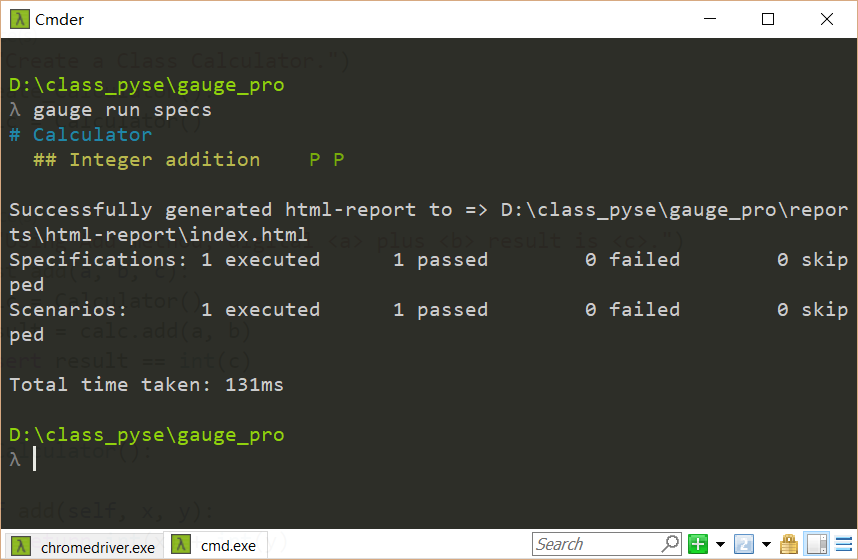初识gauge自动化测试框架(二)
2018-10-23 23:31 虫师 阅读(5947) 评论(1) 编辑 收藏 举报看到一些同学对该工具有点一兴趣,那么我将继续介绍Gauge自动化测试工具。
Gauge本质上一个BDD(Behavior Driven Development)测试框架。所以,首先你要了解BDD的操作方式。
BDD包含两部分,一部分是: 软件行为描述。另一部分是: 针对描述编写测试代码 。
首先,行为描述文件描述如下。
# 计算器
我想实现一个简单的计算器,这个计算器可以做两个数的加、减、乘、除运算。
## 测试加法
* 创建Calculator类。
* 相使用add方法,计算3 加5 的结果为8。
创建一个行为文件specs/calculator.spec,将上面的内容翻译一下:
# Calculator
I'm implementing a simple calculator that can add,
subtract, multiply, and divide two numbers.
## Test addition
* Create a Class Calculator.
* Using Add method, digital "3" plus "5" result is "8".
唯一和其它BDD框架不同之处在于,Guage的行为描述文件是由markdown话法编写。
比如Python的BDD框架behave是由一些关键字组成(Feature、Scenario、Given、When、Then等)。
# -- FILE: features/example.feature
Feature: Showing off behave
Scenario: Run a simple test
Given we have behave installed
When we implement 5 tests
Then behave will test them for us!
好了,我上面用markdown写的行为文件我想你是可以看懂的,如果实在不懂markdown语法的话。也许这个在线工具可以帮你快速学习:
再接下来,针对行为文件来写代码实现。创建 setp_impl/calculator.py 文件。
from getgauge.python import step
@step("Create a Class Calculator.")
def create_Calculator():
calc = Calculator()
@step("Using Add method, digital <a> plus <b> result is <c>.")
def test_add(a, b, c):
calc = Calculator()
result = calc.add(a, b)
assert result == int(c)
class Calculator():
def add(self, x, y):
return int(x) + int(y)
在实现测试代码文件中,通过 @step() 装饰器引用行为描述文件中的步骤,并将其中用到的数据通过 <变量> 替换,将变量用到测试步骤中。
严格来说,Calculator() 类的实现应该单独文件中实现,这里只是为了省事儿。
在项目根目录下运行 gauge run specs命令。

查看测试报告。

如果我想增加测试用例呢? 很简单,只需要增加行为描述即可。
……
## Test addition big number
* Create a Class Calculator.
* Using Add method, digital "301" plus "578" result is "879".
那么问题来了,gauge到底可以用来做什么类型的测试,这里有一些例子供你参考。
https://getgauge-examples.github.io/

